
Pal-AHK – 200MG
$184.00
Discount per Quantity
| Quantity | Discount | Price |
|---|---|---|
| 5 - 8 | 5% | $174.80 |
| 9 + | 10% | $165.60 |
Scientific Overview of Pal-AHK
Pal-AHK, also known as Palmitoyl Tripeptide-3, is a synthetic peptide of growing research interest. It is structurally related to the naturally occurring tripeptide alanine-histidine-lysine (AHK), but with a palmitoyl fatty acid chain attached, rendering it more lipophilic. This modification suggests it may interact more readily with lipid-rich environments, such as cell membranes, potentially altering its behavior in experimental models compared to non-palmitoylated AHK.
AHK itself has been studied as a copper-binding peptide with proposed roles in cellular signaling and extracellular matrix (ECM) dynamics. When modified with a palmitoyl group, Pal-AHK retains these biochemical associations while presenting researchers with an alternative form for in-vitro and molecular studies.
Alternative Names: Palmitoyl Tripeptide-3
Pal-AHK Studies and Research Data
Cellular Growth and Extracellular Matrix Renewal
Investigations into the interaction between Pal-AHK and dermal fibroblasts suggest it may encourage cell viability and proliferation in culture. Reports describe increases in collagen production, particularly type I collagen, when fibroblasts were exposed to copper-complexed AHK. Some experiments using neutral red uptake and sulforhodamine B staining indicated elevated fibroblast growth compared to control groups. Additional findings suggest that the peptide may contribute to the regulation of matrix metalloproteinases (MMPs), enzymes responsible for ECM remodeling, which could assist in clearing damaged matrix proteins while supporting new deposition.
Pal-AHK: Antioxidative and Metal-Chelating Properties
Pal-AHK has been evaluated for antioxidative potential. Chromatographic analyses indicated that AHK-containing peptides may demonstrate relatively strong metal-chelating activity, contributing to the neutralization of reactive species. This property has led to speculation about its role in supporting cellular environments against oxidative stress, although mechanistic details remain under exploration.
Vascular Pathways and Angiogenesis
In silico molecular docking experiments investigated the interaction of AHK with vascular endothelial growth factor receptor 2 (VEGFR2). Computational models suggested possible binding, which may influence downstream pathways associated with angiogenesis. While primarily computational, these observations open avenues for in-vivo experiments to test whether Pal-AHK or its derivatives could influence endothelial signaling and vascular remodeling.
Pal-AHK: Hair Follicle and Dermal Papilla Research
Studies involving dermal papilla cells (DPCs) suggest that AHK and its copper complexes may support cell proliferation while modulating apoptotic pathways. Exposure appeared to increase the ratio of Bcl-2 to Bax proteins, which are associated with cell survival, while reducing levels of apoptotic markers such as cleaved caspase-3 and PARP. Additionally, evidence suggests that AHK-Cu may upregulate the secretion of vascular endothelial growth factor (VEGF) and fibroblast growth factors (FGF-2 and FGF-7), both of which are relevant to hair follicle biology. Conversely, some studies noted a decrease in transforming growth factor-beta1 (TGF-β1), a factor often associated with limiting epithelial growth. These findings suggest that Pal-AHK and its complexes may play a role in experimental models of follicular activity and regeneration.
Conclusion
Pal-AHK represents a modified form of the tripeptide AHK that is designed for exploration in laboratory settings. Research suggests possible roles in fibroblast growth, extracellular matrix renewal, oxidative balance, angiogenesis, and follicular signaling. While much of the evidence comes from in-vitro assays and in-silico modeling, Pal-AHK remains a compound of interest for understanding how structural modifications may influence peptide behavior in controlled research contexts.
References
- Pyo, H. K., Yoo, H. G., Won, C. H., Lee, S. H., Kang, Y. J., Eun, H. C., Cho, K. H., & Kim, K. H. (2007). The effect of the tripeptide-copper complex on human hair growth in vitro. Archives of Pharmacal Research, 30(7), 834–839. https://doi.org/10.1007/BF02978833
- Jeong, J., Park, K. Y., & Kim, J. (2021). Synthesis and biological evaluation of dimeric peptide derivatives as proliferation‐stimulating agents in human follicle dermal papilla cells. Bulletin of the Korean Chemical Society, 42(11), 1435-1439.
- Kecel-Gunduza, S., Kocb, E., Bicaka, B., Kokcub, Y., Ozela, A. E., & Akyuzc, S. (2020). In silico analysis for characterizing the structure and binding properties of Ala-His-Lys (AHK) tripeptide. The Online Journal of Science and Technology, 10(3).
- Tsuge, N., Eikawa, Y., Nomura, Y., Yamamoto, M., & Sugisawa, K. (1991). The anti-oxidative activity of peptides prepared by enzymatic hydrolysis of egg-white albumin. Journal of the Agricultural Chemical Society of Japan.
- Patt, Leonard M., and A. Procyte. “Neova® DNA Repair Factor Nourishing Lotion Stimulates Collagen and Speeds Natural Repair Process.” Skin, 1 (2009): 2.
Disclaimer:
The products mentioned are intended solely for laboratory research and in-vitro experimentation. They are not approved for human or animal use of any kind. All details provided are for educational purposes only. By purchasing from this site, you agree to comply with our Terms and Conditions.
Only logged in customers may leave a review.
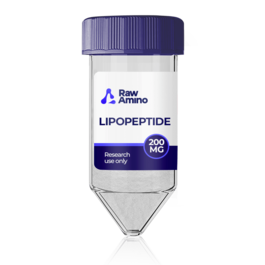
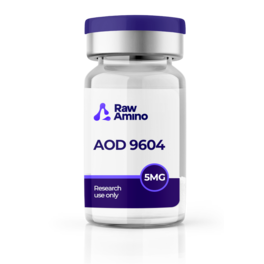
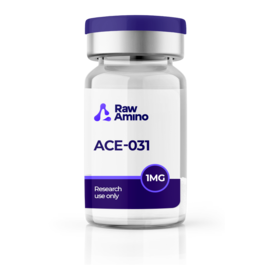
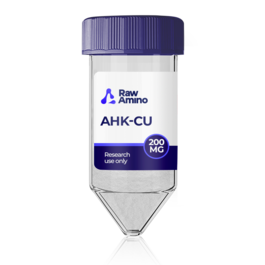
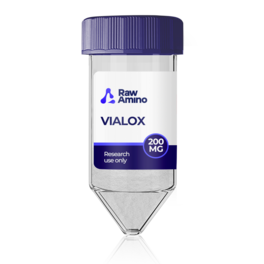
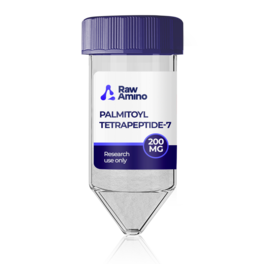
Reviews
There are no reviews yet.